Do you have a question about the Chevrolet 2005 TrailBlazer and is the answer not in the manual?
Explains that CAUTION means something could hurt you or others; the area details the hazard and how to avoid it.
Explains NOTICE means something could damage your vehicle; damage may not be covered by warranty.
Covers manual and power seat adjustments, lumbar support, and heated seat features.
Details operation of folding and tumbling rear seats, including third-row access.
Explains proper use, benefits, and special considerations for safety belts, including for pregnant women.
Covers types of child restraints, proper installation, and safety precautions for children.
Explains frontal and roof-mounted airbag systems, their operation, and safety precautions.
Details how to check the condition and operation of safety belts and airbag systems.
Information on the vehicle's key system, including ignition and door locks, and key code number.
Explains manual, power, and security lock features, including lockout protection.
Covers power windows, express-down feature, and window lockout function.
Explains content theft-deterrent and Passlock® systems for vehicle security.
Covers new vehicle break-in, ignition positions, starting the engine, and related systems.
Provides a diagram and list of the main components of the instrument panel.
Explains how to use hazard warning flashers to alert others and police.
Details the operation of the turn signal, headlamp changer, flash-to-pass, wipers, and cruise control.
Covers activation, setting, resuming, increasing/reducing speed, and ending cruise control.
Explains manual and automatic operation of headlamps, including reminders.
Describes warning lights and gages that signal vehicle functions or problems.
Overview of the DIC display and buttons for vehicle information and customization.
Provides advice on defensive driving and the dangers of drunken driving.
Explains the three main systems controlling the vehicle and the importance of traction.
Details braking action, reaction time, stopping distances, and factors affecting them.
Explains the function of ABS and its benefits in preventing braking skids.
Explains factors leading to loss of control, including skidding and driving in adverse conditions.
Crucial information on vehicle capacity weight and tire/loading labels to prevent overloading.
General information and requirements for towing vehicles and trailers.
Essential safety tips, checks, and handling advice for driving with a trailer.
Recommends using GM dealers for service and highlights genuine GM parts.
Importance of using recommended fuel and understanding octane ratings.
Guidance on checking engine oil level and type, and the engine oil life system.
Information on DEX-COOL® coolant, its properties, and when to change it.
Information on brake fluid, its level, type, and safety precautions.
Detailed, safe procedures for jump starting a vehicle with a dead battery.
Importance of tire maintenance, including tread wear, inflation, and condition.
Crucial information on maintaining correct tire inflation pressure for safety and performance.
Step-by-step instructions and safety precautions for changing a flat tire.
General advice on cleaning products and their safe use to maintain vehicle appearance.
Explains the Vehicle Identification Number (VIN) and its location.
Overview of the electrical system, including add-on equipment and headlamp wiring.
Explains how fuses and circuit breakers protect wiring from short circuits and fires.
Outlines scheduled maintenance intervals, checks, and inspections for vehicle upkeep.
Emphasizes the necessity of following maintenance intervals for optimal vehicle condition and warranty coverage.
Explains how proper maintenance contributes to environmental protection and vehicle longevity.
Details the specific services required at different intervals (Maintenance I and II) based on the change engine oil light.
Lists services that should be performed at specific mileage intervals, including emission control services.
Describes owner-performed checks and services at intervals like fuel fills and monthly inspections.
Lists recommended fluids, lubricants, and their part numbers for vehicle maintenance.
A log to record scheduled services, dates, and performed work.
Steps to resolve concerns with dealerships and escalate if needed.
Details of the automatic roadside assistance program, including services offered and contact information.
How to report safety defects to the US government, Canadian government, and General Motors.
How to order service manuals and owner publications.
Explains that CAUTION means something could hurt you or others; the area details the hazard and how to avoid it.
Explains NOTICE means something could damage your vehicle; damage may not be covered by warranty.
Covers manual and power seat adjustments, lumbar support, and heated seat features.
Details operation of folding and tumbling rear seats, including third-row access.
Explains proper use, benefits, and special considerations for safety belts, including for pregnant women.
Covers types of child restraints, proper installation, and safety precautions for children.
Explains frontal and roof-mounted airbag systems, their operation, and safety precautions.
Details how to check the condition and operation of safety belts and airbag systems.
Information on the vehicle's key system, including ignition and door locks, and key code number.
Explains manual, power, and security lock features, including lockout protection.
Covers power windows, express-down feature, and window lockout function.
Explains content theft-deterrent and Passlock® systems for vehicle security.
Covers new vehicle break-in, ignition positions, starting the engine, and related systems.
Provides a diagram and list of the main components of the instrument panel.
Explains how to use hazard warning flashers to alert others and police.
Details the operation of the turn signal, headlamp changer, flash-to-pass, wipers, and cruise control.
Covers activation, setting, resuming, increasing/reducing speed, and ending cruise control.
Explains manual and automatic operation of headlamps, including reminders.
Describes warning lights and gages that signal vehicle functions or problems.
Overview of the DIC display and buttons for vehicle information and customization.
Provides advice on defensive driving and the dangers of drunken driving.
Explains the three main systems controlling the vehicle and the importance of traction.
Details braking action, reaction time, stopping distances, and factors affecting them.
Explains the function of ABS and its benefits in preventing braking skids.
Explains factors leading to loss of control, including skidding and driving in adverse conditions.
Crucial information on vehicle capacity weight and tire/loading labels to prevent overloading.
General information and requirements for towing vehicles and trailers.
Essential safety tips, checks, and handling advice for driving with a trailer.
Recommends using GM dealers for service and highlights genuine GM parts.
Importance of using recommended fuel and understanding octane ratings.
Guidance on checking engine oil level and type, and the engine oil life system.
Information on DEX-COOL® coolant, its properties, and when to change it.
Information on brake fluid, its level, type, and safety precautions.
Detailed, safe procedures for jump starting a vehicle with a dead battery.
Importance of tire maintenance, including tread wear, inflation, and condition.
Crucial information on maintaining correct tire inflation pressure for safety and performance.
Step-by-step instructions and safety precautions for changing a flat tire.
General advice on cleaning products and their safe use to maintain vehicle appearance.
Explains the Vehicle Identification Number (VIN) and its location.
Overview of the electrical system, including add-on equipment and headlamp wiring.
Explains how fuses and circuit breakers protect wiring from short circuits and fires.
Outlines scheduled maintenance intervals, checks, and inspections for vehicle upkeep.
Emphasizes the necessity of following maintenance intervals for optimal vehicle condition and warranty coverage.
Explains how proper maintenance contributes to environmental protection and vehicle longevity.
Details the specific services required at different intervals (Maintenance I and II) based on the change engine oil light.
Lists services that should be performed at specific mileage intervals, including emission control services.
Describes owner-performed checks and services at intervals like fuel fills and monthly inspections.
Lists recommended fluids, lubricants, and their part numbers for vehicle maintenance.
A log to record scheduled services, dates, and performed work.
Steps to resolve concerns with dealerships and escalate if needed.
Details of the automatic roadside assistance program, including services offered and contact information.
How to report safety defects to the US government, Canadian government, and General Motors.
How to order service manuals and owner publications.
| Brand | Chevrolet |
|---|---|
| Model | 2005 TrailBlazer |
| Category | Automobile |
| Language | English |
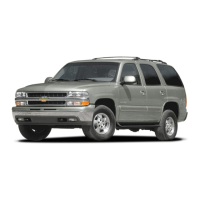
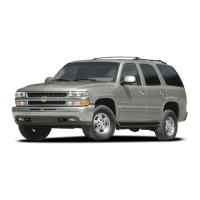


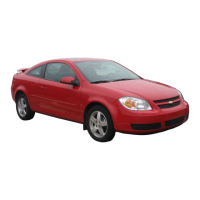
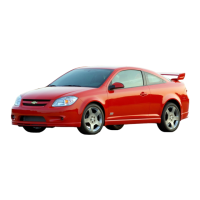





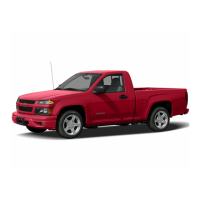
